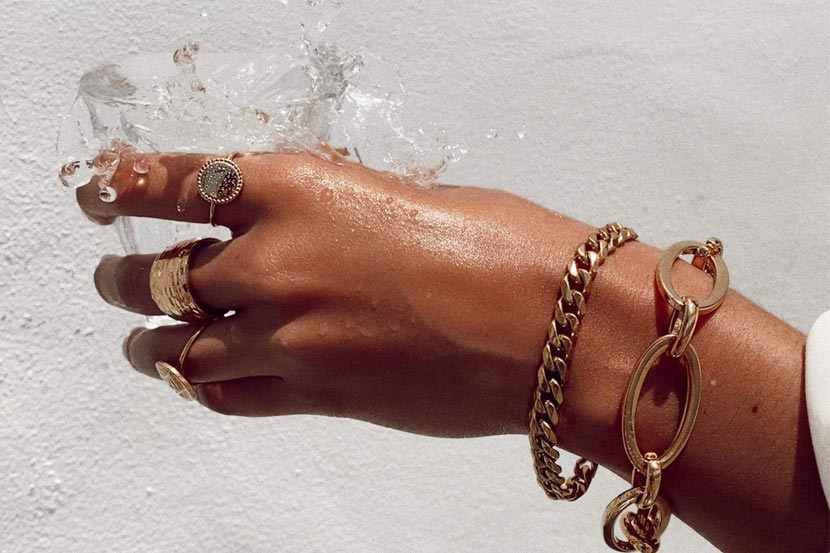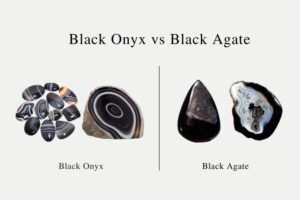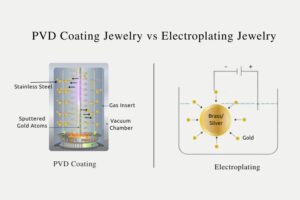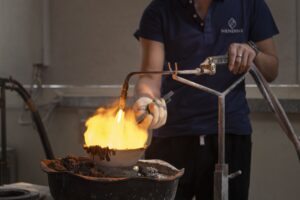The major reason why jewelries are popular is the sparkling luster, shine, and additional beauty they have on fashion. But they can begin to look dull or worse when they come in contact with moisture (water or sweat). Hence, why it’s important you get to know waterproof jewelry that lasts for a lifetime.
In this post, we will focus on sweatproof jewelry, enlightening you on the effects of sweat on jewelry and the best jewelry types you can rely on.
How Does Sweat Damage Your Jewelry?
Sweat can cause your jewelry to change color and tarnish. It is a natural way our body employs to get rid of too much fat, fatty acid, amino acid, etc. Sweat is salty and only a few metals can withstand salty content. Even if it’s in little quantity, it’s still a salty-acid that can damage your jewelry pieces.
NOTE: Some metals may be waterproof, but not sweatproof. This is because while water can be pure, sweat contains salt and acids.
What Type of Jewelry is Sweatproof?
Discussed below are the types of jewelry that are resistant to sweat, ensuring durability and long-lasting sparkle. While some of these jewelries are made of one material, others are composed of a mixture of 2 or more materials.
Solid Gold
Solid gold is a mixture of various materials, but majorly containing real gold. While real gold is highly-resistant to sweat, it is too soft and cannot be easily configured to make jewelry. Thus, it’s alloyed with other metals like copper and silver for additional strength.
There are different grades of solid gold and they are measured in karats. They include:
- 10K: Contains 41.7% real gold and 58.3% other metals.
- 12K: Contains 50% real gold and 50% other metals.
- 14K: Contains 58.5% real gold and other metals.
- 18K: Contains 75% real gold and 25% other metals.
- 22K: Contains 91.7% real gold and 8.3% other metals.
The commonly used grade level for jewelry making are 14K and 18K, as they create a balance between beauty and durability.
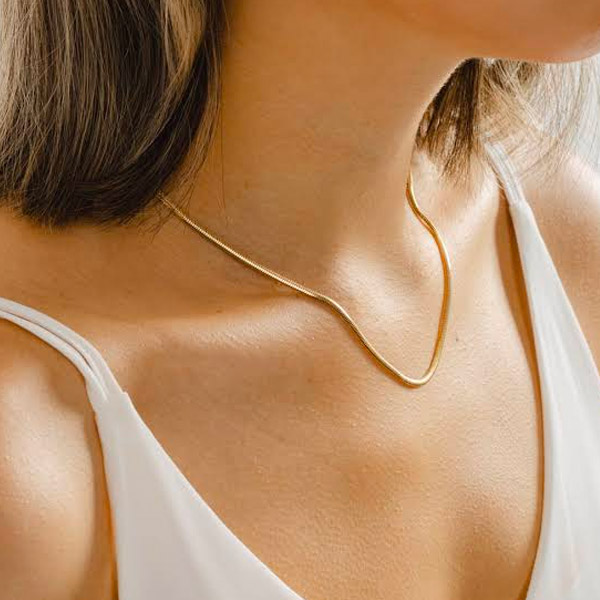
Generally, solid gold jewelry can withstand corrosion and tarnishing, which makes it an ideal option when you need sweatproof pieces. Additionally, it has a timeless appeal and retains its value for years, making it a great choice for everyday wear, including during workouts or strenuous activities.
Gold-Filled
Gold-Filled is also a composition of different metals. It involves bonding a thick layer of real gold onto a base metal, which is often brass or copper. The thick real gold layer is attached strongly to the base metal through a heat and pressure process, ensuring its firmness and longevity.
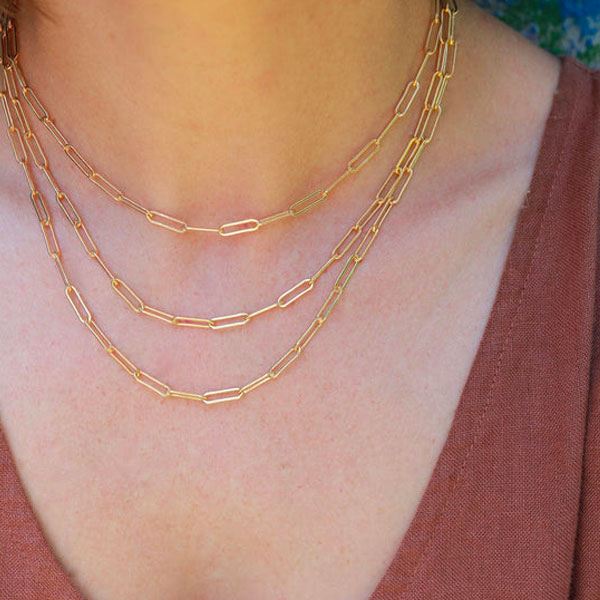
Because of the lesser quantity of real gold used, gold-filled serves as an affordable alternative to solid gold, since they offer similar resistance levels to tarnishing, corrosion, and sweat.
Pure Silver
Pure silver, also known as fine silver or real silver, is 99.9% silver. While pure silver is considered too soft like real gold, it has remarkable durability and can stand against sweat without corroding or tarnishing.
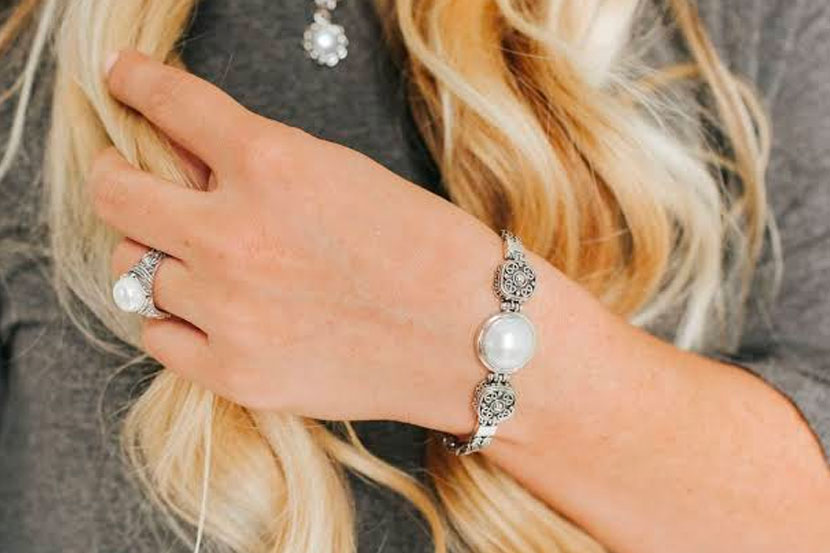
Because of its extremely high purity and malleability, it tends to scratch easily. However, it still remains one of the best options when seeking high-quality, low-maintenance jewelry. But with regular care and maintenance, you can preserve its appearance, ensuring that it’s a cherished piece for life.
Titanium
Titanium is a lightweight, extremely pure, and strong metal that’s globally revered among sustainable jewelry manufacturers for its biocompatibility, corrosion resistance, and sweatproof. It does not rust or tarnish over time, making it a preferred option for everyday wear.
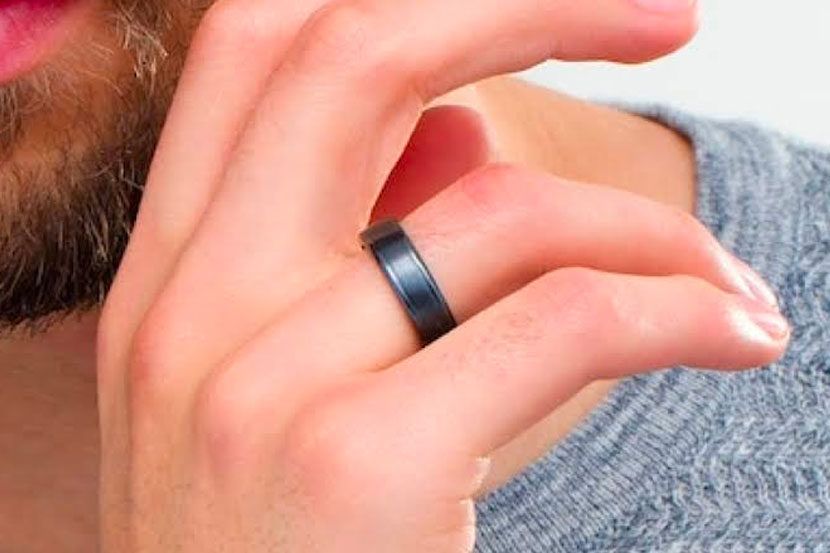
This material is also hypoallergenic, thus suitable for people with sensitive skin. Titanium jewelry can be customized to several finishes and styles, offering both durability and aesthetic appeal.
10K, 14K, & 18K Gold, Which is Sweatproof?
The percentage of real gold in these different karat levels determines which is best for waterproofing. 10K contains 41.7% real gold, 14K contains 58.5% real gold, and 18K contains 75% real gold.
While 10K and 14K can be used for making alluring gold jewelry, 18K offers better sweatproof abilities.
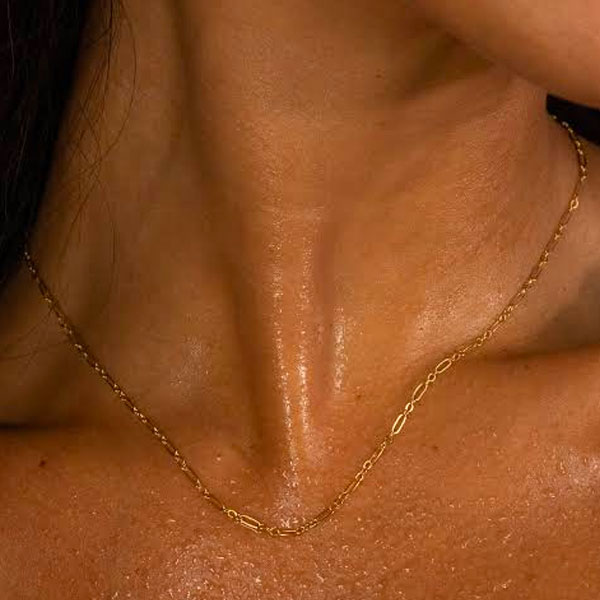
Is Sterling Silver (925 Silver) Sweatproof?
Sterling silver is an extension of pure silver. Basically, it’s composed of 92.5% pure silver and 7.5% other metals, like copper. While the addition of other metals make sterling silver harder, it is not totally sweat-resistant. This is solely because the percentage of silver in the composition is not as high as pure silver (which is 99.9%).
But when sterling silver is rhodium-plated, it becomes sweatproof. The bonding of rhodium on the sterling silver’s surface makes it tough and resistant to sweat.
Conclusion
Most jewelry is known not to survive exposure to sweat because of the salty and acidic content in it. Over time, these jewelry begin to tarnish and become less captivating.
But we believe that after reading this post, you can now make informed decisions on purchasing beautiful and sweatproof jewelry that will last the test of time. Opting for jewelry made of solid gold, gold-filled, pure silver, and titanium proves to be more cost-effective, as you can use them during sweat-wicking activities without worries of budgeting for another beautiful piece.
